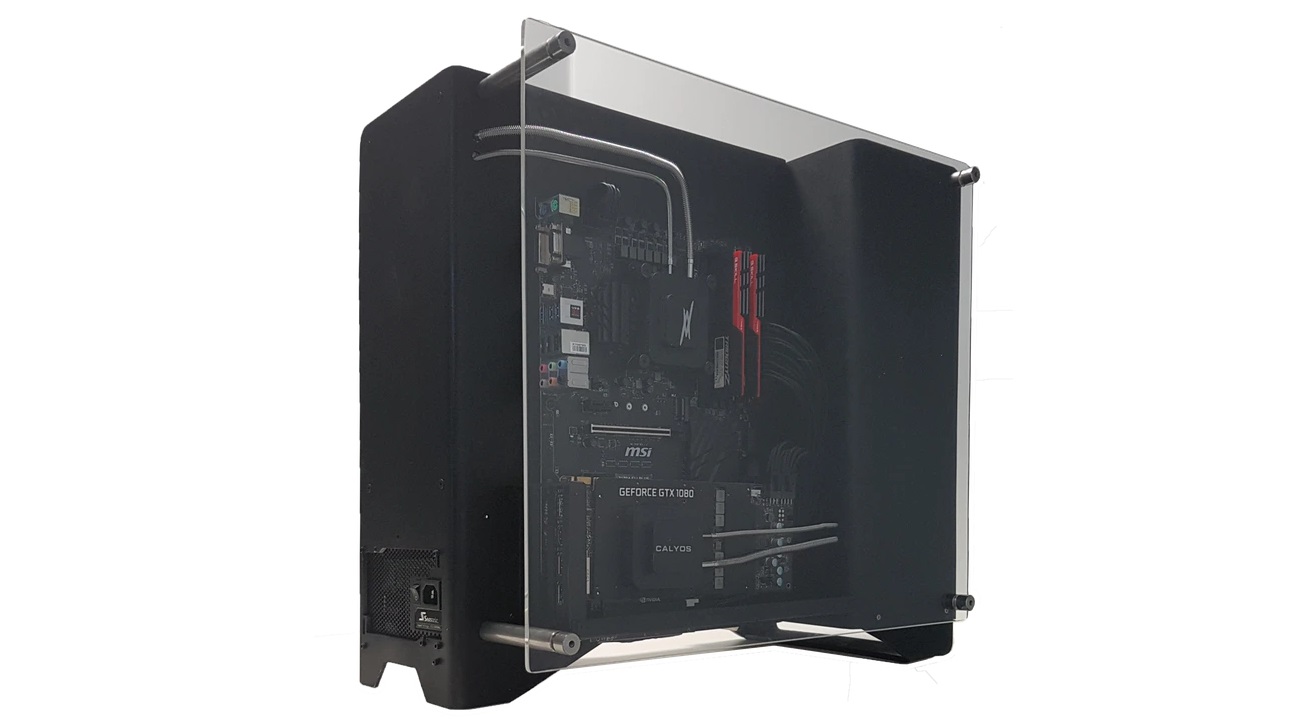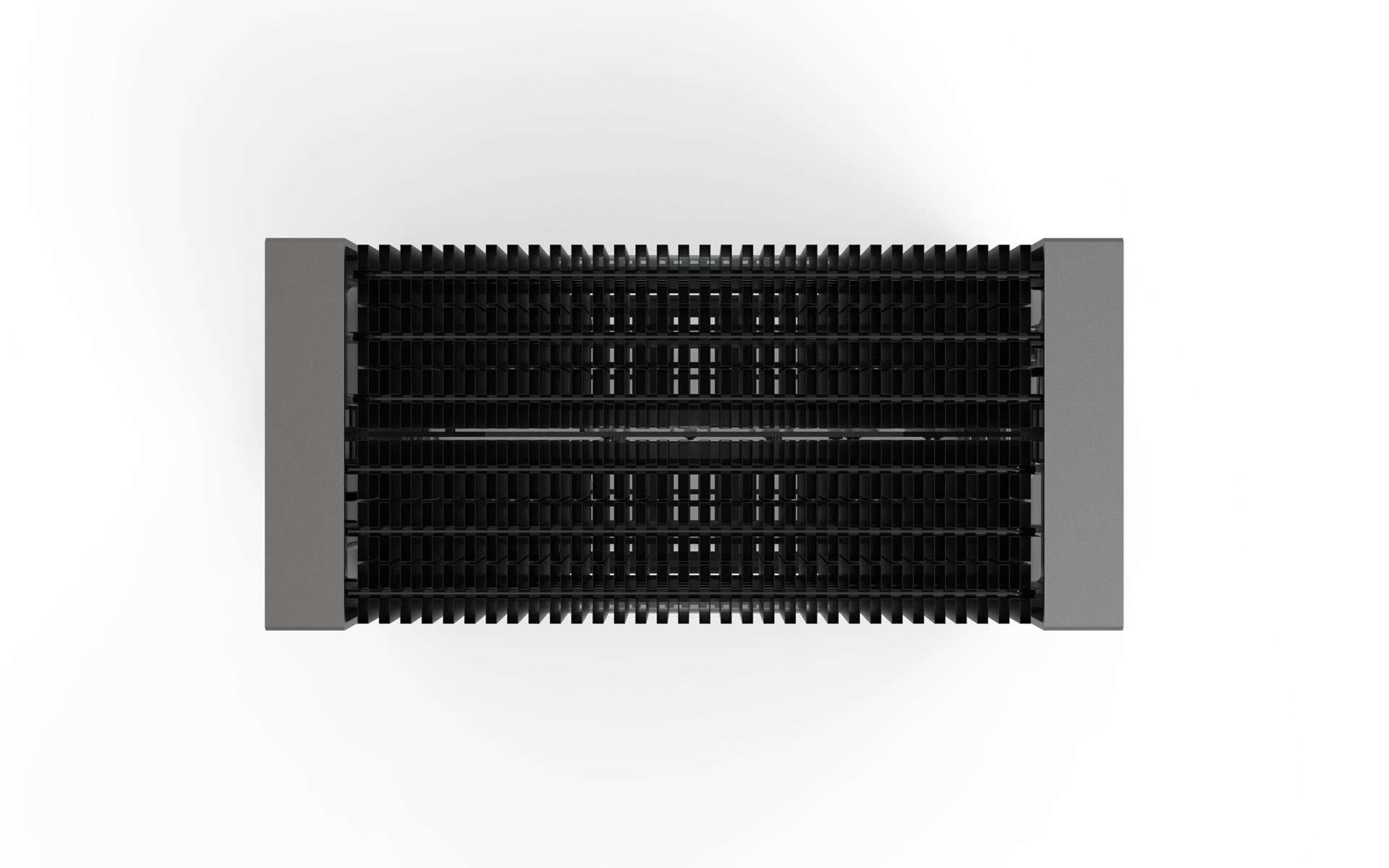Silent But Deadly: PC Chassis Can Dissipate 600W Without Fans

There are loads of gaming systems that boast high performance and then there are fanless PCs that can run basic multimedia and productivity applications. Regrettably, the domains of gaming and fanless technology seldom overlap, resulting in a scarcity of passively cooled gaming desktops, which are often custom made and use expensive components. But it looks like Streacom wants to change that and make fanless gaming systems more widespread.
Streacom plans to showcase its SG10, a PC chassis that can dissipate up to 600W of thermal energy without usage of any fans at Computex in late May. The case was developed in collaboration with Calyos, which specializes on advanced thermal solutions relying on loop heat pipe (LHP) technology. An avid reader will probably recall that a couple of years ago Streacom already teased a case capable of dissipating 600W. That chassis has never made it to the market, but the SG10 is expected to become a product that will be available in retail.




For now, Streacom and Calyos are tight-lipped about their jointly developed SG10. We presume that the general principle used by all cases designed to enable passively-cooled systems is that the chassis itself acts like a massive heatsink. Meanwhile, this approach involves establishing a direct connection between heat-producing chips and the case. This part is indeed tricky, and this is where Calyos comes into play with its LHP expertise.
While 600W does not sound a lot by today's standards, in fact such a machine could pack an AMD Ryzen 9 7950X3D or an Intel Core i9-13900K CPU and a GeForce RTX 4070-based graphics card, thus offering quite formidable performance in games.
The most intriguing aspect of this fanless case is how it establishes efficient thermal conductivity between the heat-generating chips and the case's structure. Typically, users use custom-made heat pipes and apply thermal paste between them and special cavities in the chassis. That would be quite tricky to do with a bunch of custom-designed graphics cards that are on the market these days.
Anyhow, it looks like Streacom and Calyos are serious about bringing SG10 to market, so most probably it will feature convenient mechanisms to 'connect' CPUs and GPUs to the heatsink, which is the chassis itself.
Get Tom's Hardware's best news and in-depth reviews, straight to your inbox.

Anton Shilov is a contributing writer at Tom’s Hardware. Over the past couple of decades, he has covered everything from CPUs and GPUs to supercomputers and from modern process technologies and latest fab tools to high-tech industry trends.
-
JohnBonhamsGhost so, is the reason that the actual case is not being shown to the public yet because it is that ugly or awkwardly designed?Reply
Tom's earlier posted article regarding Streacom fanless cases shows an odd angle of one of their cases but nothing i can find anywhere with a full view of this SG10. -
OneMoreUser Talk about Clickbait.Reply
An article about the fact that a company say it is going to be showing a case, which it says will passively cool 600 watt.
What is next for TH?
An article about how the next CPU from Intel is going to be faster that their current offering and that it will have multiple cores.
It is a shame because in a not so distant past TH was a good place to go for articles, now it is just a waste of time at best. -
helper800 Reply
Bye!OneMoreUser said:Talk about Clickbait.
An article about the fact that a company say it is going to be showing a case, which it says will passively cool 600 watt.
What is next for TH?
An article about how the next CPU from Intel is going to be faster that their current offering and that it will have multiple cores.
It is a shame because in a not so distant past TH was a good place to go for articles, now it is just a waste of time at best. -
suryasans This chassis is an ideal solution for passively cooled PC components with ambient temperatures below 30 °C.Reply -
hotaru251 Reply
these passive cases for huge thermal capacity are never "pretty".JohnBonhamsGhost said:so, is the reason that the actual case is not being shown to the public yet because it is that ugly or awkwardly designed?
theres just a massive amount of metal heatsink to dissipate the heat. (and that much metal isnt gonna be pretty) -
anoldnewb Will it fit my 300 watt triple fan gpu?Reply
Show me the fanless, 300 watt dissipating radiator and I’m interested -
anoldnewb Reply
Look here:JohnBonhamsGhost said:so, is the reason that the actual case is not being shown to the public yet because it is that ugly or awkwardly designed?
Tom's earlier posted article regarding Streacom fanless cases shows an odd angle of one of their cases but nothing i can find anywhere with a full view of this SG10.
https://www.techpowerup.com/308177/streacom-and-calyos-tease-the-unfashionably-late-and-beleaguered-sg10-for-computex-2023 -
Lucie 2A Hi,Reply
This case is from the Kickstater project 'Calyos NSG S0' (2017 !)
https://www.kickstarter.com/projects/1489140137/nsg-s0-worlds-first-fanless-chassis-for-high-perfo?lang=enAs the Kistarter project itself doesn't reach production, the project has been reshape and after consulting the Kickstarter community, Calyos make a new derived project with Streacom.
The phase changing system used by Calyos do dissipates about 300W per loop, so yes, 600 W with 2 loops.
It is a proven technology already on the market for data centres and spatial applications, not available for general consumer until ... now.
But, well, do expect a premium price for this solution.
Have a nice day. -
bit_user Reply
Company issues a press release, the tech press picks up on it and reports it. What's so fishy about that? They cover product announcements all the time, in addition to their own product reviews and tradeshow coverage. It's all part of the mix.OneMoreUser said:Talk about Clickbait.
An article about the fact that a company say it is going to be showing a case, which it says will passively cool 600 watt.
I can see that you might not have picked up on their habit of highlighting when they do an actual review or roundup - those articles tend to use those words in the title. For myself, when I clicked on the article, I did not expect to see a full review and therefor do not register this article as clickbait.
Perhaps it would've been better if they'd included the word "Claims" or "Announces" in the title?